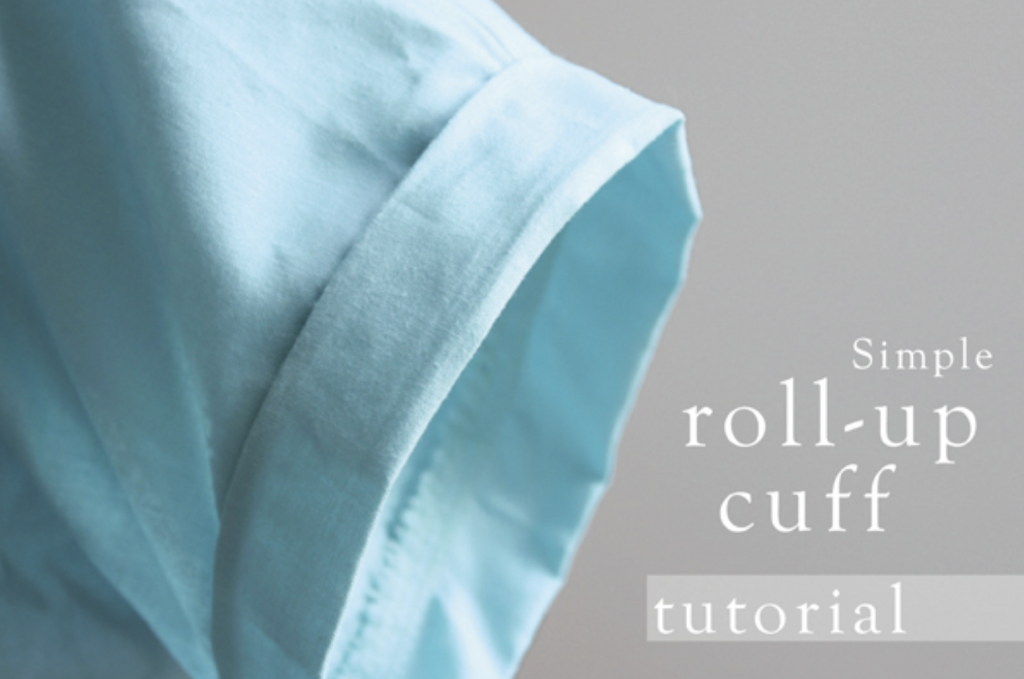
Curved patch pocket tutorial
Today I’m sharing a very picture-heavy post on how to make a neat patch pocket.
Patch pocket is a pocket that is not integrated in the garment seams, instead it’s cut on a separate piece of fabric and topstitched onto the garment. They come in all shapes and sizes, but today we’re doing one with rounded corners. It’s a very visible design feature and therefore needs to be finished neatly, so I suggest practising with some spare fabric before cutting your most expensive silk!
There’s no need to finish the raw edges, however if your fabric frays very easily you absolutely can.
Finish the upper edge first. Here, you should have more seam allowance than elsewhere. I’m using 5 cm (2″). Fold down the full seam allowance towards the right side, then turn up 1 cm (3/8″) towards the wrong side.

Trim away a tiny amount along both raw edges of seam allowance. Literally just 1 mm if not less.

Stitch the edges, pulling the now slightly narrower seam allowance so that raw edges match.

The wrong side will now be a bit wavy because the seam allowance is pulling. Don’t worry, this is intentional.

Trim away the corners and grade the rest of the seam allowance if working with a medium to heavy weight fabric.

Turn over to the right side and your pocket should look like this.

Push out the corners and give it a press. This is when you will appreciate making the seam allowance narrower: the seam ends up on the wrong side and is therefore not visible from the right side.
Next up, topstitch the edge in place. I forgot to do this here! Jump 7 images forward to see the topstitch.

Now we’ll move on to the tricky bit which is the curved edge. There are two great tricks for doing this, and I like to use both of them together. Do a gathering stitch along the curve at 9 mm (5/16″) from the edge (or whatever your seam allowance minus 1 mm) using longest stitch length. This helps you ease in the seam allowance and also to shape the curve.

Pull from one thread end to ease in the seam allowance. Just a tiny bit is enough, you don’t want any actual gathers.

Trick number two is cutting a piece of thin cardboard in the shape of the finished pocket. This makes it very easy to get the shape right. Use the pocket pattern piece (minus seam allowance) to create your cardboard shape.
Use a low heat and push the tip of the iron up against the cardboard. If you’re not using the cartboard shape, fold and iron using the gathering stitch as a guide to get the shape right.

Here we go, a nicely shaped pocket. It’s so much easier to make sure that the shape is right now rather than when you’re sewing it on.


Place the pocket on the garment and use an edge to line it up with. If you’re working with a delicate fabric it would be a good idea to interface the fabric where the pocket will be sewn.

Making sure everything’s flat, pin the pocket in place along the edges.

When stitching the pocket in place, you’ll want to reinforce the seam on top, especially if it’s a pocket that will actually be used. I like to just start and finish with a long backtack. Alternatively, you can do a triangle shape on top, or tack diagonally after first stitching around.
Stitch very close to the edge.

Final press and you’re done.

If the seam allowance shows through as a visible line, you can trim it down to 4-5 mm (1/4”), or cut it with pinking shears. I quite like that the the seam allowance shows through here, it reminds me of the look of jeans. Maybe I should do a second topstitch?



Hagen skirt sew-along – Part 4 | Salme Sewing patterns
May 23, 2020 at 8:18 am[…] • Patch pocket • Rectangular pocket with flap • Faux pocket flap – coming soon! […]